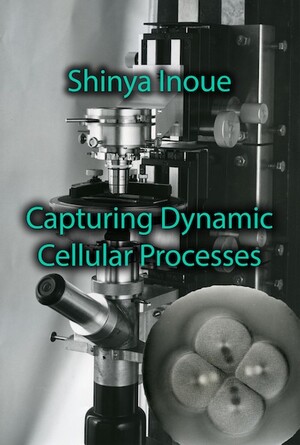In 1980, Shinya started the Analytical and Quantitative Light Microscopy course at the MBL. He served as Instructor-in-Chief until 1987, and moved to the MBL full-time in 1982. It was in this course that Shinya and others, developed what became known as Video Microscopy, at the same time as Bob and Nina Allen. Inoué and the Allens used video equipment to demonstrate to audiences of students, but quickly realized how useful video technology would be in improving the images generated through the polarizing microscope.
Using an image-processing computer, Shinya and his colleagues could enhance the contrast between the structures of interest and the rest of the cell, and filter out irrelevant detail and background. These improvements enabled researchers to identify structures and processes that would otherwise have been too faint and indistinct to be observed. Shinya’s son Ted helped to develop and improve the digital technology that enabled video microscopy. Shinya himself authored two versions of the highly-regarded book titled Video Microscopy, which was published in many editions and in languages including English, Japanese, and Spanish.
Inoué was active at the MBL through the 1990s and into the twenty-first century with new initiatives, ideas, and projects. He was elected to the National Academy of Scientists in 1993. New researchers such as Rudolf Oldenbourg joined his research team and helped to establish the Architectural Dynamics in Living Cells program at the MBL, which later became part of the Cellular Dynamics program.
He worked with collaborators to invent the Centrifuge Polarizing Microscope (CPM) and with 2008 Nobel laureate Osamu Shimomura and others to examine the polarizing properties of Green Fluorescent Protein.
- Shinya Inoué, Pathways of a Cell Biologist. Through Yet Another Eye. Springer: 2016
- Shinya Inoué, Collected Works Of Shinya Inoué: Microscopes, Living Cells, and Dynamic Molecules (With DVD-ROM). World Scientific Publishing Company; Har/Dvdr edition (July 18, 2008).

